Julie Feinstein has lived in Brooklyn Heights for 20 years, she thinks, but it is only in the last 18 months or so that she’s been able to really enjoy whatever it is that comprises this neighborhood’s urban wildlife.
“This park has been fabulous,” she said, standing in Brooklyn Bridge Park’s grassy Pier One. She particularly enjoys the ponds, where she has seen various birds, insects, and the occasional muskrat. Last year, she watched as the first generation of dragonflies colonized one of the ponds.
“I have photos of them mating in the ponds, and laying eggs,” Feinstein said, excitedly. “The male and female get attached. I watched for an hour!”
The ponds in Brooklyn Bridge Park are also home to pond skaters, sometimes called skimmers, which are those itsy-bitsy things that make ripples on the surface of the water. “They communicate with those ripples,” Feinstein explained, adding, “There’s a whole universe on their scale down there, with rivalries, and death battles, and rapes, and all kinds of things going on.”
Before Pier One opened in 2010, Feinstein, a collections manager at the American Museum of Natural History, would amble down to the piers under the Brooklyn and Manhattan Bridges in search of wildlife. “It was so icky,” she admits, in retrospect. “You wouldn’t want to go there. People were camped out there.”
But dealing with ickiness is part of Feinstein’s job: the collection she manages for the AMNH consists of more than 70,000 samples of perishable animal tissue. With three masters degrees under her belt—in botany, tropical ecology, and biology—and stints living in tropical French Guyana and the cloud forests of Taiwan, Feinstein has encountered beings much rarer than those that populate the Heights.
“I’ve probably held in my hands things that haven’t been named yet,” Feinstein, who blogs at UrbanWildlifeGuide.net, said matter-of-factly. (For the record, she had no trouble naming the golf ball-sized Carpenter bee that swooped in front of my face during our walk, as my life flashed before my eyes.)
Besides the buggies, Brooklyn hosts all manner of birds: mockingbirds; robins; cardinals; starlings; song sparrows; and the ubiquitous pigeon, to name just a few. On walks over the Brooklyn Bridge, Feinstein’s eagle eye (pun intended) has even spotted peregrine falcons nesting atop the Manhattan tower.
“I’ll stop to look at them,” she mused of the “big, beautiful, stripey” falcons. “And no one else sees it!”
The waters off Pier One are home to a variety of ducks, and on her Saturday morning walks Feinstein has witnessed Gadwalls and Red-breasted Mergansers floating around. She described the latter as “funny-looking,” and “fancy,” adding, “With binoculars, you would say, ‘Wow, I never knew such a thing would live in a city river.’”
Mammals also inhabit urban areas, like the coyotes, raccoons, opossums, and bunny rabbits of Central and Prospect Parks, and the mice and rats of the subway. In her book, Field Guide to Urban Wildlife, Feinstein notes that foxes can be found in cities throughout North America, though rarely in New York.
Where there are humans there will always be bugs, birds, and other beasts, regardless of the measures people take to ward them off. Brooklyn Heights residents are, in Feinstein’s opinion, lucky to have the treasure trove that is (apparently) Brooklyn Bridge Park at our disposal; even if just for the odd muskrat viewing, or Carpenter bee invasion.
She added, knowingly, “People are dying for animals to communicate with.”
Make sure to check out Julie’s book:
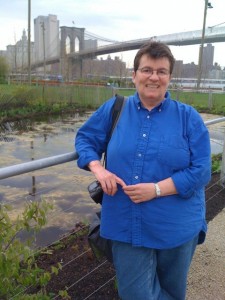
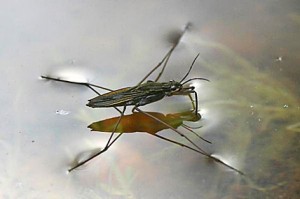
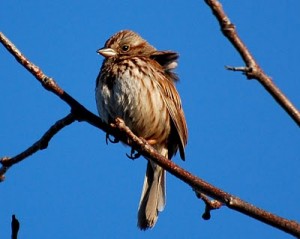
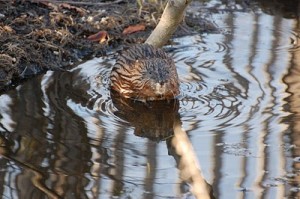
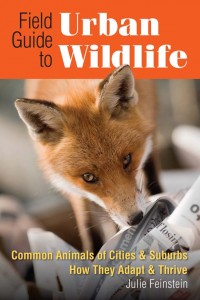



Comments are closed.